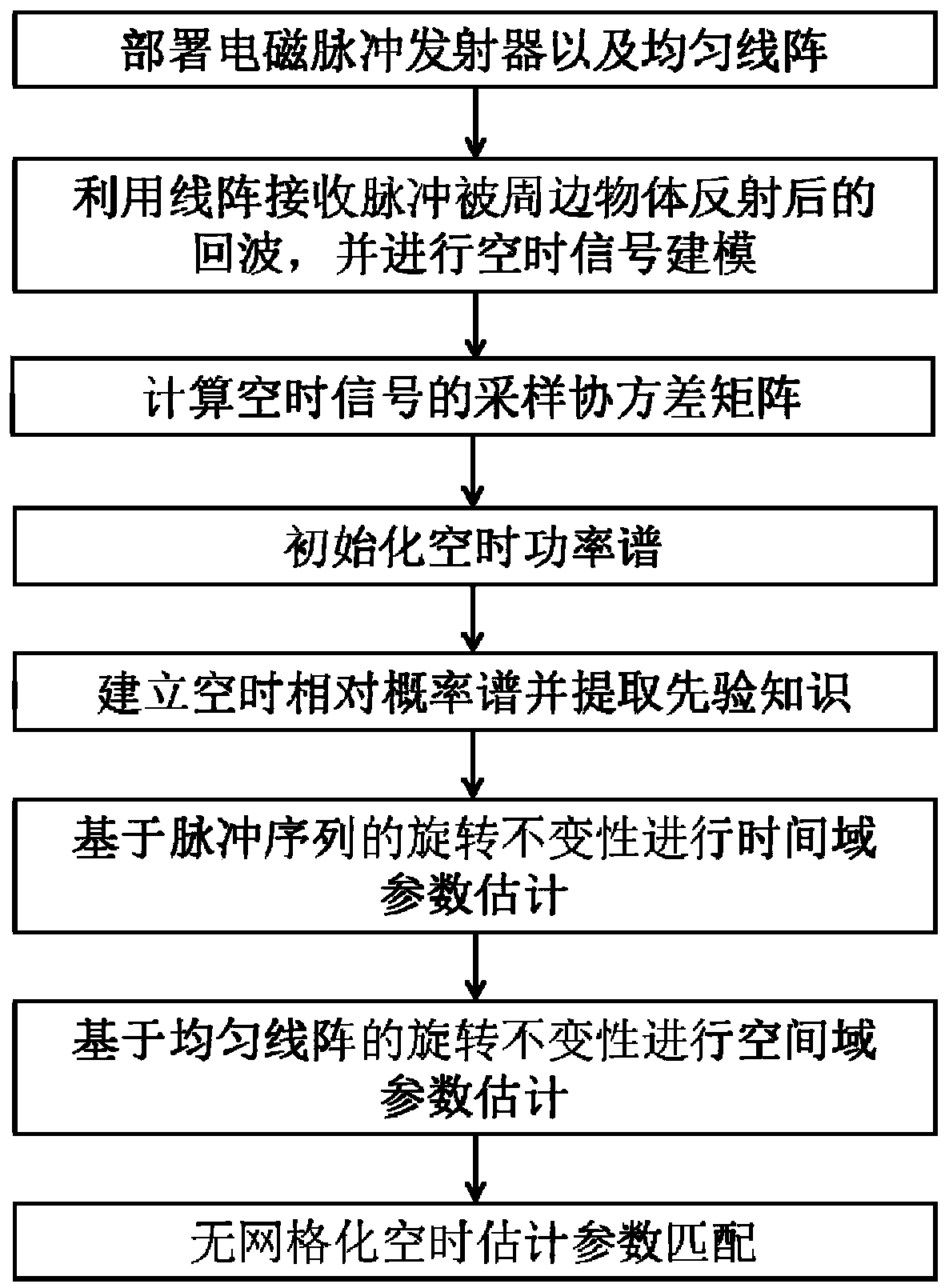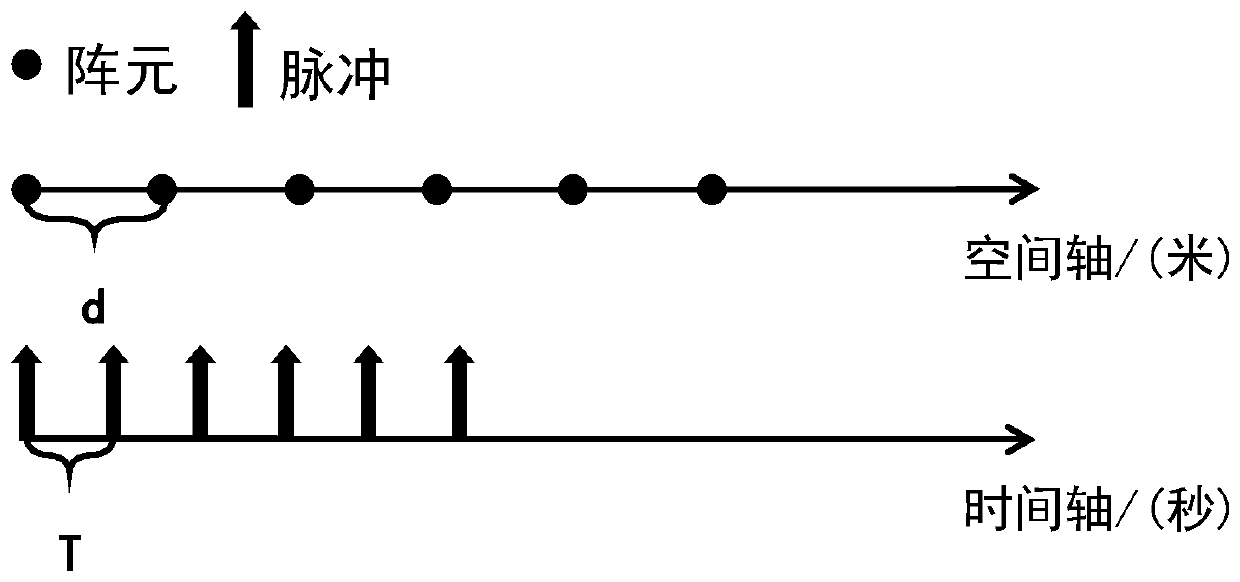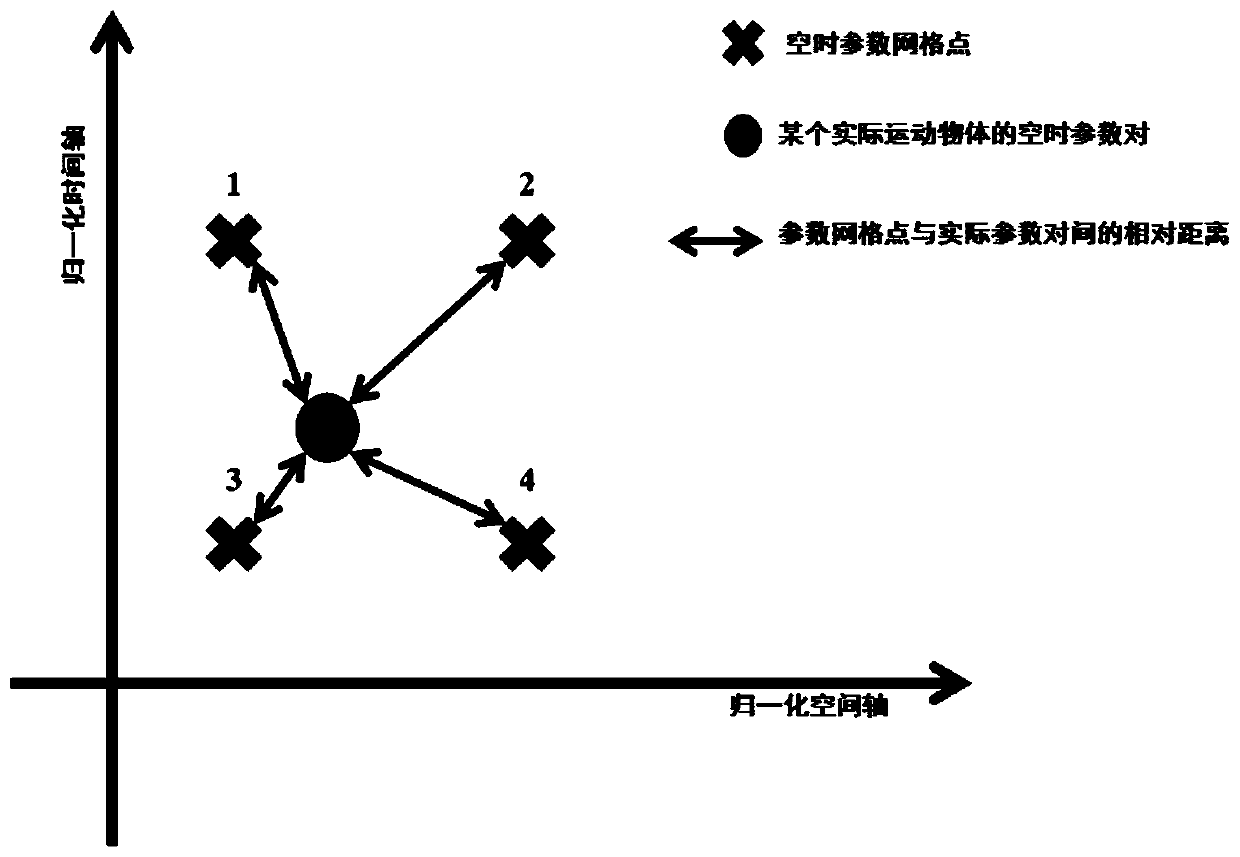Sequential space-time adaptive processing parameter estimation method
A space-time self-adaptive and parameter-processing technology, which is applied in the field of signal processing, can solve problems such as the delay between calculation results and actual conditions, the optimization method cannot completely solve the mismatch problem, and the space-time rotation factor is difficult to separate separately.
- Summary
- Abstract
- Description
- Claims
- Application Information
AI Technical Summary
Problems solved by technology
Method used
Image
Examples
Embodiment Construction
[0071] The technical solutions and effects of the present invention will be further described in detail below with reference to the accompanying drawings.
[0072] At present, many parameter estimation methods in space-time adaptive processing use the sparse nature of space-time signals to reconstruct the space-time spectrum. This is a classic method for space-time parameter estimation without any prior knowledge. It brings high The complexity of the solution will cause signal processing delays in practical applications; in addition, since the reconstruction method using the sparse nature establishes a two-dimensional grid plane for discrete search, it is difficult to avoid the problem of decreased estimation accuracy caused by grid mismatch. In order to maintain a low computational complexity while ensuring high estimation accuracy, the present invention proposes an estimation method that is rough first and then precise, and utilizes the rotation invariant property that exists...
PUM
 Login to View More
Login to View More Abstract
Description
Claims
Application Information
 Login to View More
Login to View More - R&D
- Intellectual Property
- Life Sciences
- Materials
- Tech Scout
- Unparalleled Data Quality
- Higher Quality Content
- 60% Fewer Hallucinations
Browse by: Latest US Patents, China's latest patents, Technical Efficacy Thesaurus, Application Domain, Technology Topic, Popular Technical Reports.
© 2025 PatSnap. All rights reserved.Legal|Privacy policy|Modern Slavery Act Transparency Statement|Sitemap|About US| Contact US: help@patsnap.com



